Pallet Changing Machine: How Do Yards Swap Heavy Ship Parts Pallets?
Handling heavy, oversized parts in a shipyard or industrial yard is a constant battle against risk and inefficiency. Imagine a massive, multi-ton marine engine block or a critical steel component sitting on a cracked or broken wooden pallet. The entire logistics chain grinds to a halt. This isn't just a minor delay; it's a direct threat to your timeline, your budget, and most importantly, your workers' safety. The traditional method of manually unloading and reloading these behemoths is slow, labor-intensive, and fraught with danger. Every minute spent on this task is a minute of lost productivity and a moment where a costly accident could happen. But there is a modern, engineered solution. A pallet changing machine automates this entire process, transforming a high-risk bottleneck into a fast, safe, and streamlined operation.
Yards swap heavy ship parts pallets using a specialized piece of equipment known as a pallet changing machine or a pallet inverter. This powerful machine securely clamps the entire load, including the pallet, and then either rotates it 180 degrees or uses a hydraulic plate to push the load smoothly onto a new pallet. This method eliminates the need for manual handling, allowing a single operator to swap even the heaviest and most cumbersome loads in a matter of minutes, dramatically improving safety and efficiency.
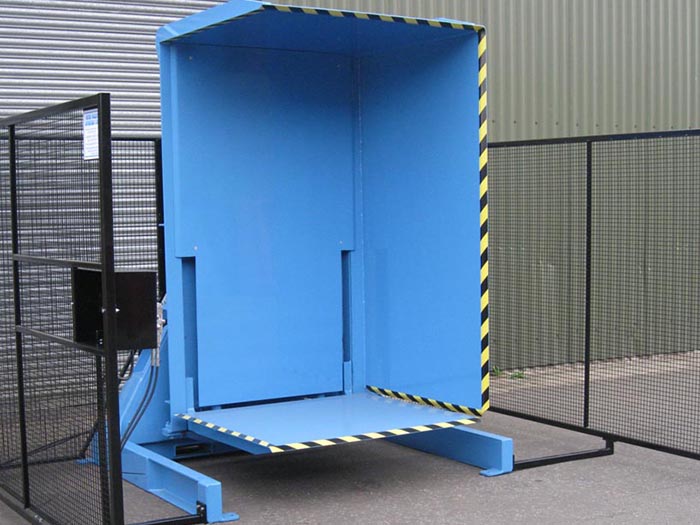
This technology might sound straightforward, but its impact on an operation is profound. I've been in this industry for a long time, starting on the factory floor and eventually building my own company, SHJLPACK. I’ve seen firsthand how a single piece of well-chosen equipment can revolutionize a company's workflow. It’s not just about swapping a pallet; it’s about fundamentally improving how you handle materials to boost safety, reduce costs, and increase your operational capacity. Let's dig deeper into how this technology works and why it has become so essential for any serious industrial operation.
What exactly is a pallet changer and why is it crucial for heavy industries?
You have a valuable, finished product ready to ship, but it's sitting on the wrong pallet. Perhaps the pallet was damaged during internal transport, or your customer requires a specific type of plastic or heat-treated pallet for export. You're stuck. The conventional fix is a logistical nightmare. You have to assemble a team of workers to painstakingly de-stack the product by hand or with a forklift, piece by piece, then re-stack it all onto the new pallet. This process is not just slow; it's a huge drain on labor and introduces multiple opportunities to damage the product or, worse, injure your staff. For heavy industrial parts, this manual process is often simply not an option. This is where a pallet changer provides an elegant and powerful solution, handling the entire load at once and making the switch in minutes, not hours.
A pallet changer is a stationary machine designed to transfer a full pallet's worth of goods from one pallet to another without de-stacking the load. For heavy industries like steel mills, manufacturing plants, and shipyards, this equipment is absolutely critical. It provides a safe and incredibly fast method for exchanging pallets under heavy, oversized, or unstable loads—a task that is otherwise impractical, dangerous, and time-consuming to perform manually. It bridges a crucial gap in the logistics chain.
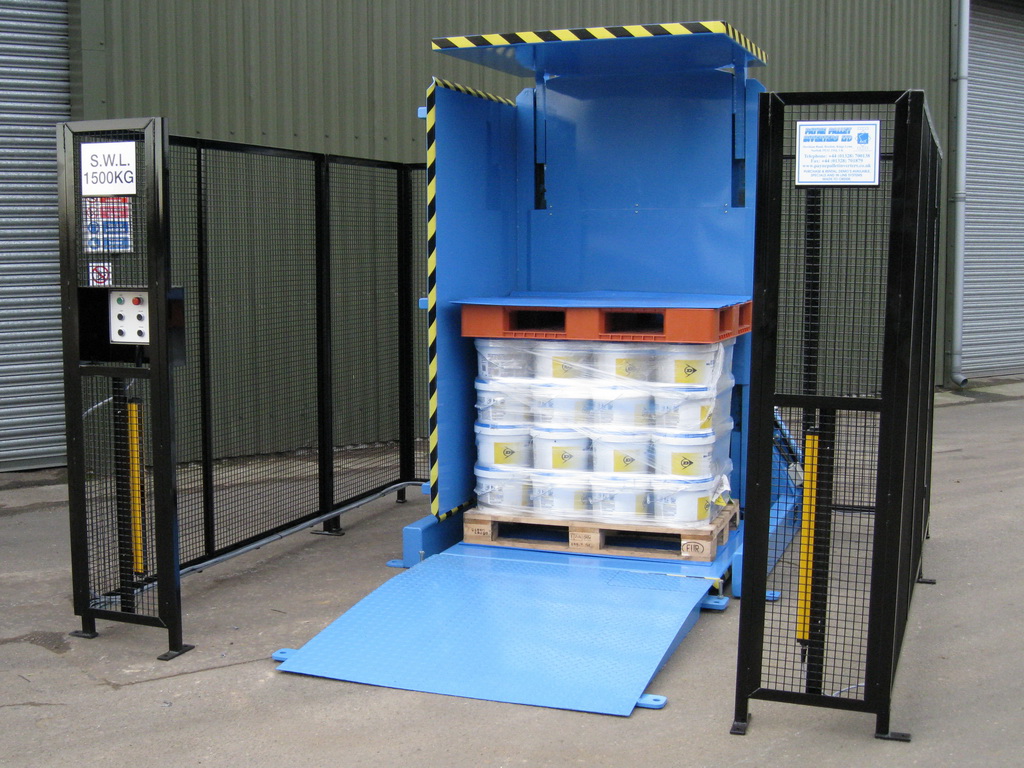
The Core Mechanics of Pallet Changing
The fundamental principle of a pallet changer is simple but effective. The machine first secures the entire product load. This is usually done with adjustable side walls or a top clamping plate that applies just enough pressure to hold everything steady without causing damage. Once the load is secure, the machine performs the transfer. This happens in one of two ways: either by inverting the load 180 degrees, allowing the old pallet to be removed from the top, or by using a pusher plate to gently slide the entire load from the source pallet to the destination pallet. The entire cycle is controlled by a single operator from a safe distance, often taking less than three minutes to complete. This is a world away from the hour-long, multi-person manual effort it replaces.
Why 'Heavy Industries' Present a Unique Challenge
In heavy industries, we are not talking about neat boxes of consumer goods. The loads are on a completely different scale. We are talking about large engine components, heavy steel castings, palletized refractory bricks, or massive forged parts for ships. These items are not only extremely heavy, often weighing several tons, but they can also have awkward shapes and high centers of gravity. The value of these single pallet loads can be in the tens or even hundreds of thousands of dollars. Dropping or damaging one is not a minor write-off; it's a significant financial loss and can cause major project delays. The risks associated with manually handling such items are simply too high. A pallet changer is engineered specifically to manage these immense weights and values with mechanical precision and reliability.
| Feature | Manual Swapping | Pallet Changer |
|---|---|---|
| Time per Load | 30 - 90 Minutes | 2 - 5 Minutes |
| Labor Required | 2 - 4 Workers + Forklift Driver | 1 Operator |
| Safety Risk | High (Strains, Crushing, Drops) | Very Low |
| Product Damage Risk | High (from repeated handling) | Very Low |
| Equipment Needed | Forklifts, pry bars, manpower | Pallet Changer Machine |
| Ideal Load Type | Light, stable, low-value goods | Heavy, unstable, high-value goods |
I recall visiting a client's steel fabrication yard before they invested in this technology. I watched four men struggle for over an hour to transfer a heavy, crated gearbox from a broken pallet. The tension was high. One slip, and a vital piece of equipment would be ruined, and a worker could have been seriously injured. Six months later, I returned to see their new pallet inverter in action. That same task was completed by one operator in less than four minutes. The return on investment wasn't just in the saved labor hours; it was in the complete removal of that risk and the newfound predictability in their workshop schedule.
How does a pallet changing machine improve safety and efficiency in a yard?
In any industrial setting, but especially in a busy yard, workplace safety is paramount. A single serious injury can have devastating consequences, leading to lost workdays, soaring insurance premiums, and a decline in team morale. The risk is always present, but it multiplies during repetitive, heavy-lifting tasks like manually transferring loads between pallets. You can have the most stringent safety protocols in place, but you cannot eliminate the risk of physical strain or human error when people are physically handling multi-ton loads. Relying on manpower for this job is an invitation for trouble. Every manual lift is a potential point of failure. The solution is to remove the human from the lifting equation. A pallet changing machine automates the most dangerous part of the task, creating a controlled, predictable, and exceptionally safe environment. This enhancement in safety directly translates into a massive boost in overall operational efficiency.
A pallet changing machine improves safety by completely eliminating the need for manual lifting of heavy products, which drastically reduces the risk of back strains, sprains, and other musculoskeletal injuries. It simultaneously enhances efficiency by slashing the time required for a pallet swap from an hour or more down to just a few minutes. This reduces direct labor costs, minimizes product damage from handling, and ultimately increases the overall throughput of the entire facility.
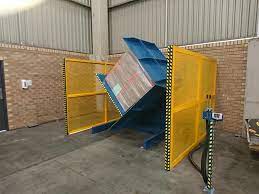
A Deep Dive into Safety Enhancements
The safety improvements are not just theoretical; they are tangible and immediate. First, let's talk about ergonomics. The machine does all the work. There is no bending, twisting, or straining for your employees. The risk of the most common industrial injuries—those related to overexertion and improper lifting—is virtually eliminated from this process. Second is the principle of containment. The machine securely clamps the load before any movement occurs. This prevents parts from shifting, slipping, or falling, which is a major hazard when dealing with heavy or irregularly shaped items like ship parts. Finally, it reduces chaotic forklift traffic. Instead of multiple forklifts maneuvering in a tight space to de-stack a pallet, a single forklift simply places the load in the machine and retrieves it a few minutes later. This creates a more organized and less hazardous workspace.
Quantifying the Efficiency Gains
As a business owner, I know that numbers speak louder than words. So let’s quantify the impact. Let's assume a manual pallet swap requires two workers and takes one hour to complete. If your yard performs this task just four times a day, that adds up to 8 man-hours daily. A pallet changer, operated by one person, completes the same task in five minutes. For four pallets, that's just 20 minutes of one operator's time. You have just reclaimed over 7.5 man-hours every single day. Multiply that by your number of working days in a year, and the labor savings alone are substantial. But the efficiency gain goes far beyond labor. The truck that's waiting to be loaded isn't sitting idle. The next stage of your production line isn't waiting for a component. This dramatic reduction in downtime is a direct contributor to higher capacity utilization. It turns a frustrating bottleneck into a smooth, non-stop flow, which is exactly how a modern, profitable yard should run.
| Metric | Before (Manual Process) | After (Pallet Changer) | Direct Impact |
|---|---|---|---|
| Time to Swap One Load | ~60 minutes | ~3 minutes | 95% Time Reduction |
| Labor per Load | 2-3 Workers | 1 Operator | ~67% Labor Reduction |
| Risk of Worker Injury | High | Minimal | Lower Insurance Costs, Improved Morale |
| Risk of Product Damage | Moderate | Minimal | Reduced Spoilage & Rework Costs |
| Production Line Downtime | High | Low | Increased Throughput & Utilization |
What are the key types of pallet changers for handling heavy parts?
Once you are convinced that a pallet changer is the right direction for your operation, you face the next challenge: the market is filled with different models and designs. A machine built to handle light boxes in a pharmaceutical cleanroom will fail spectacularly if you try to use it for a two-ton steel casting. Choosing the wrong type of machine is a very expensive mistake. You could invest a significant amount of capital into a piece of equipment that cannot handle your products safely, that breaks down under the immense strain of industrial use, or that is simply a poor fit for your workflow. Instead of a solution, it becomes another operational headache. The key is to understand the main categories of pallet changers and their specific applications. For heavy parts, the focus must be on robust, high-capacity machines designed to thrive in a demanding industrial environment.
The two key types of pallet changers suitable for handling heavy parts are Pallet Inverters and Pusher-Type Pallet Changers. Pallet Inverters work by clamping and rotating the entire load 180 degrees to allow for pallet access from the top. Pusher types, on the other hand, use a powerful pushing wall to slide the load horizontally from one pallet to another at the same level.
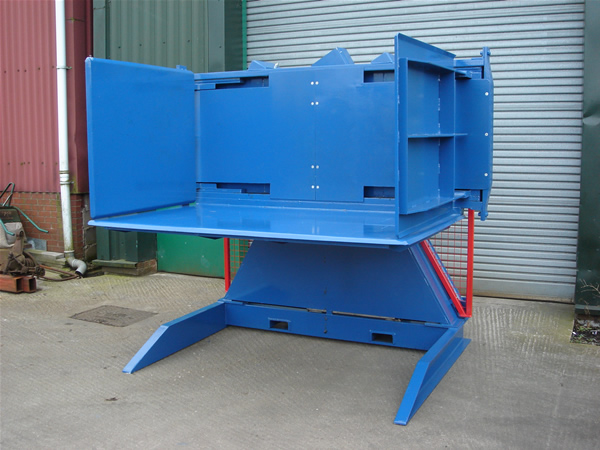
The Pallet Inverter: Power and Versatility
The pallet inverter is often the workhorse of heavy industry. Its operation is based on power and simplicity. The machine has a solid base and a moving top clamp. A forklift places the load onto the machine's platform. The top clamp descends to secure the load, applying controlled pressure. The entire assembly, load and all, is then hydraulically rotated a full 180 degrees. The original pallet is now on top, easily accessible for the forklift to remove. A new pallet is placed on top, and the load is rotated back to its original position. I've seen these machines handle enormous loads with complete stability. The clamping pressure is adjustable, ensuring that even the heaviest parts are held securely without being damaged. For an operation like a steel mill or a shipyard, this is often the ideal solution for handling palletized parts, crated engines, or heavy components.
The Pusher-Type Changer: Precision for Sensitive Loads
The pusher-type changer offers a different approach for loads that cannot be inverted. This could include things like barrels of industrial fluids, tall and unstable stacks of components, or any product that must remain upright. In this system, the source pallet and destination pallet are placed side-by-side. A vertical back wall and side wall move in to square up and support the load. Then, a powerful hydraulic pushing plate smoothly slides the entire load from the old pallet across a bridge onto the new pallet. The process is gentle and keeps the load perfectly level throughout the transfer. While often used for more delicate items, heavy-duty versions are available that can handle significant weights, providing a crucial alternative when inversion is not possible.
| Feature | Pallet Inverter | Pusher-Type Changer |
|---|---|---|
| Mechanism | Clamps and Rotates 180° | Pushes load horizontally |
| Best For | Stable, robust, boxed loads (e.g., crated ship parts, steel blocks) | Unstable, top-heavy, or liquid loads (e.g., barrels, pails) |
| Load Orientation | Load is turned upside down | Load remains upright |
| Footprint | Can be relatively compact | Often requires more linear floor space |
| Cycle Speed | Generally very fast | Can be slightly slower than inverting |
| Typical Application | Heavy manufacturing, distribution of solid goods | Chemical, food & beverage, sensitive parts handling |
The choice between these two types comes down to your specific products. If you primarily handle solid, stable items like crated parts, large castings, or other robust materials, the Pallet Inverter is usually the most durable, fastest, and most cost-effective solution. Its simple, powerful design is built for the rigors of a heavy industrial yard. If your product mix includes items that cannot be tipped, then a Pusher-Type changer is the necessary choice.
How do you choose the right pallet changer for your specific needs?
You understand the technology and you know the main types available. Now comes the most critical part: making the final decision. The specification sheets for these machines are filled with technical details—load capacity, clamping pressure ranges, cycle times, hydraulic power ratings. It is very easy to get overwhelmed by the data and overlook a detail that is critical for your specific operation. Missing one key factor, like the maximum height of your loads or the type of pallets you use, can lead to purchasing a machine that is incompatible with your workflow. This results in costly on-site modifications or, in the worst-case scenario, a very expensive machine that sits idle because it can't do the job you bought it for. The only way to avoid this is to use a systematic approach. By breaking down your requirements into clear, logical categories, you can confidently evaluate your options and select the machine that will be a perfect strategic fit for your yard and your products.
To choose the right pallet changer, you must perform a detailed analysis of four key areas: load characteristics (weight, dimensions, stability), operational requirements (speed, level of automation), facility constraints (available floor space, power), and your budget, which should include not just the initial purchase price but also the long-term return on investment (ROI).
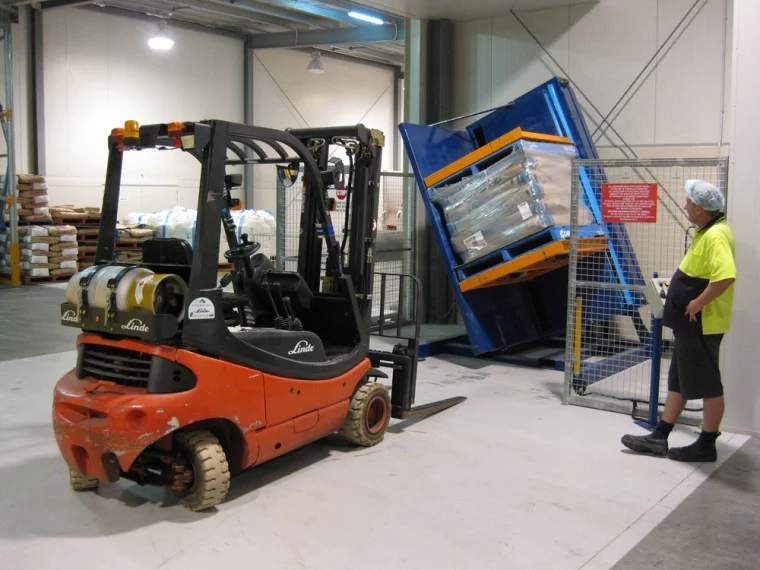
Step 1: Analyze Your Load in Detail
This is the most important step. You need to be precise. Don't just think "heavy." You must define the absolute maximum weight of any pallet load you will ever need to handle. Then, add a safety margin of at least 20%. What are the length, width, and height dimensions of both your largest and your smallest pallet loads? The machine must be able to accommodate this full range. Are your loads stable, like a single large crate, or are they potentially unstable, like a stack of smaller components? Are the products sensitive to clamping pressure? Gathering this specific data is the foundation for making the right choice.
Step 2: Define Your Operational Goals
Think about how this machine will fit into your daily workflow. How many pallets do you need to swap per hour or per day? This will determine the required cycle time of the machine. Do you need a stand-alone, forklift-loaded machine that sits in a corner of the yard, or do you require a fully automated, in-line system that integrates with your existing conveyors? An inline system costs more but offers much higher throughput and supports larger digitalization goals, like feeding data directly into a Manufacturing Execution System (MES). Your goals for efficiency and data integration will heavily influence this decision.
| Category | Key Question to Ask Yourself | My Professional Notes |
|---|---|---|
| Load Specs | What is my absolute maximum load weight? What are my max/min load dimensions (L x W x H)? | This is non-negotiable. Always choose a capacity that is higher than your current maximum to future-proof your investment. |
| Operation | How many pallets per hour/day must be processed? Will it be loaded by forklift or conveyor? | Speed and integration level are the biggest drivers of model choice and overall project cost. |
| Pallet Types | What types and sizes of pallets do we use (e.g., wood, plastic, US, EU)? | The machine's clamping mechanism and base must be compatible with all pallet types you use, both now and in the future. |
| Facility | What is the available floor space? What is the ceiling height? What power is available? | Get the machine's layout drawings and place them on your facility map. Ensure there is adequate room for a forklift to approach and maneuver safely. |
| Budget & ROI | What is the budget for initial purchase? What is the expected payback period? | Think about the Total Cost of Ownership (TCO), not just the sticker price. Factor in maintenance, spare parts, and energy consumption. Calculate the ROI based on labor savings and increased throughput. |
This checklist is the exact process I use when I consult with my clients at SHJLPACK. It transforms the conversation from a vague "I need a machine" to a precise "I need a solution that can handle 3-ton loads up to 2 meters high, process 10 pallets per hour, and fit into my existing shipping bay." This level of detail is how you find a true strategic partner, not just a supplier.
How can a pallet changer be a strategic investment for long-term growth?
Many business owners initially view a pallet changer as just another piece of machinery—a necessary expense to fix a specific operational problem. They look at the price tag and see a cost that needs to be minimized. This limited perspective is a mistake. It causes them to miss the much larger, strategic value that this equipment can bring. When you view it as just a cost, you might choose the cheapest option, fail to integrate it properly into your workflow, and never realize its full potential. The machine becomes an "operational island," solving one small problem but failing to contribute to the overall health and growth of the business. When viewed correctly, a pallet changer is a powerful strategic investment that unlocks new levels of efficiency, flexibility, and safety. It is a foundational component for building a modern, resilient, and more profitable industrial operation for the years to come.
A pallet changer becomes a strategic investment when you see it as a tool that future-proofs your logistics. It gives you the power to adapt to any customer's pallet requirements instantly. It systematically reduces your long-term operational costs and risks. It also improves your environmental and safety credentials, which enhances your brand's reputation and can open doors to new markets with stricter compliance standards.
Beyond ROI: Building Operational Resilience
As an owner in a heavy industry like steel or shipbuilding, you understand better than anyone the challenges of market cycles and fluctuating demand. Building resilience into your operations is key to long-term survival and success. A pallet changer is a powerful tool for resilience because it gives you immense flexibility. For example, what happens if a major new customer in a different country requires all shipments to be on their specific pool pallets? Or if a high-value export requires new, heat-treated wood pallets? Without a pallet changer, fulfilling this request is a major operational and financial headache. With a pallet changer, it is a simple, routine task. You are no longer constrained by your internal pallet system. You gain the agility to say "yes" to more customers and more opportunities, making your business stronger and more adaptable.
A Stepping Stone to Digitalization and Sustainability
Your strategic goals likely include initiatives around digitalization and environmental sustainability. A modern pallet changer is a direct contributor to both. It is no longer just a "dumb" mechanical device; it's an intelligent node in your smart factory. These machines can be equipped with IoT sensors to track usage cycles, monitor performance, and transmit data for predictive maintenance programs—directly supporting your goal of increasing equipment uptime. This data can be fed into your MES or ERP system, giving you a clearer, real-time view of your entire production flow. On the sustainability front, a pallet changer makes it easy to switch from disposable wooden pallets to reusable plastic or composite pallets, reducing waste and deforestation. It also allows you to easily retrieve and repair your own damaged pallets, extending their life and reducing your consumption of new materials. This equipment stops being a cost center and becomes a proactive tool that helps you achieve your most important strategic objectives: lower operating costs, deeper digital integration, and better environmental stewardship. This is why I founded SHJLPACK. I didn't just want to sell equipment. I wanted to share the knowledge I gained building my own factory from the ground up. I have seen with my own eyes how one smart investment in the right piece of handling equipment can create a positive ripple effect across an entire business. It can fundamentally change how you think about your workflow and unlock potential you didn't know you had. It's a journey I've lived myself, and it's why I am so dedicated to helping others in this industry succeed.
Conclusion
In short, a pallet changer is a powerful tool for safety and efficiency, transforming a dangerous task into a strategic advantage for any modern industrial yard.



